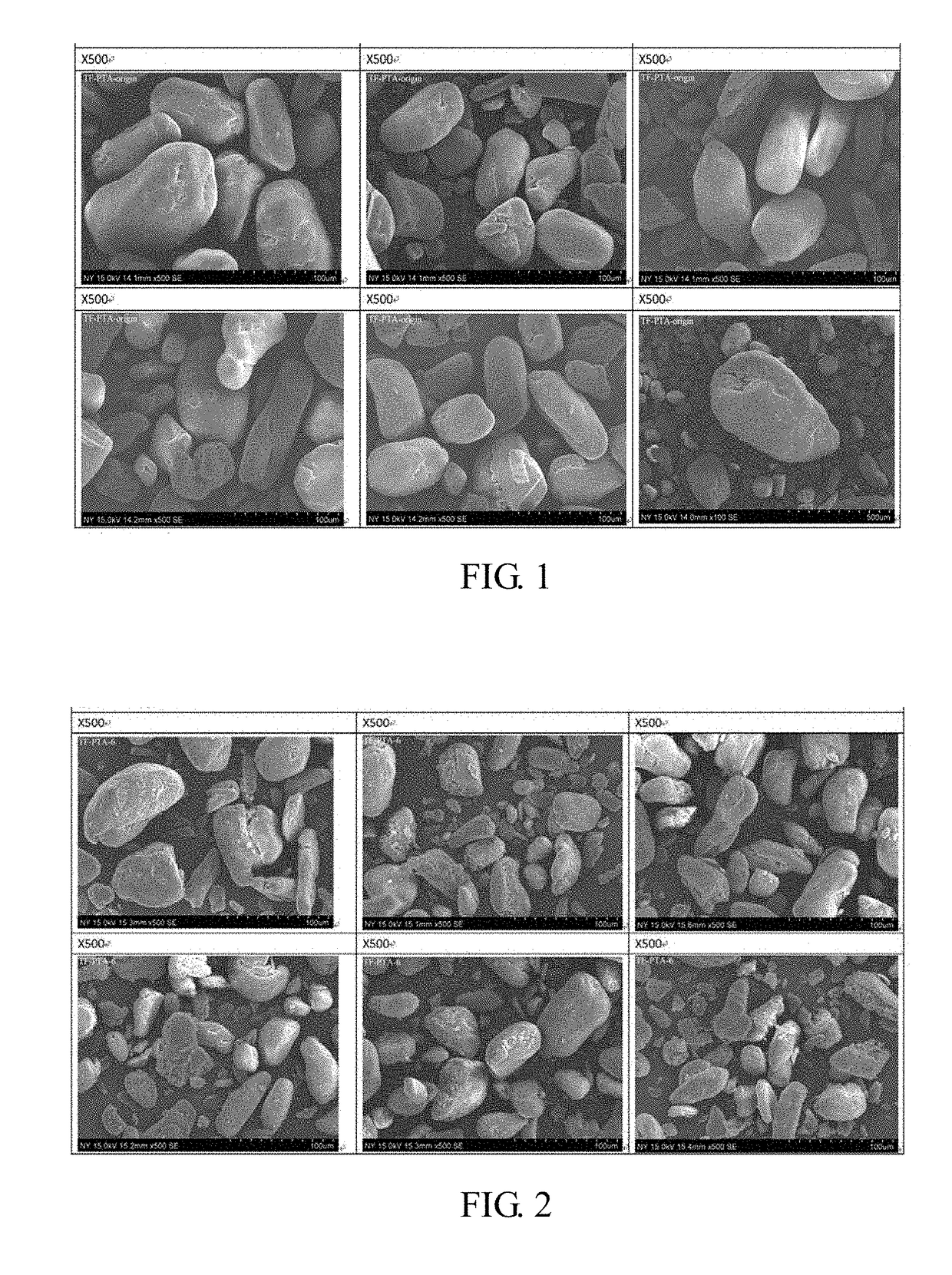Dioctyl terephthalate plasticizer and method of enhancing reaction efficiency in process for producing the same
- Summary
- Abstract
- Description
- Claims
- Application Information
AI Technical Summary
Benefits of technology
Problems solved by technology
Method used
Image
Examples
example 1
[0022]The components used are shown in Table 1. First, a homogenizer was used to fine the PTA composition as below. 119 g of PTA and 119 g of a slurry solvent 2-EH were mixed and processed using the homogenizer (3000-6000 rpm, 50-60 Hz) for 6 times into slurry (1) to form PTA slurry having a PTA particle size of 107.3 μm. The SEM image of PTA was shown in FIG. 2. Additional 161 g of the alcohol, 2-EH, was used to rinse residual PTA slurry in the homogenizer to obtain slurry (2). And, 0.6 g of TIPT as a catalyst was added into the slurry (1) and the slurry (2) in a four-neck flask. With nitrogen gas introduced, the reaction temperature was increased gradually from 180° C. to 225° C. over the reaction time of 2.5 hours, including the reaction pressure was 1013 mbar for the first 1.5 hours and −30 mbar for the last 1 hour, with water produced during the reaction removed. When the acid value of the mixture became below 1 mgKOH / g, an aqueous solution of alkaline metal hydroxide was used ...
example 2
[0023]The components both used and processed are same as described for Example 1, except the slurry (1) is processed for 9 times through using the homogenizer to form PTA slurry having a PTA particle size of 103.2 μm, instead of 6 times taught by the Example 1. The result is provided in Table 1.
example 3
[0024]The composition as shown in Table 1 was processed as described for Example 1, with the difference that the component weight ratio of PTA / 2-EH slurry was 1:1.3, and the PTA slurry has a PTA particle size of 108.6 μm. The result is provided in Table 1.
PUM
| Property | Measurement | Unit |
|---|---|---|
| Temperature | aaaaa | aaaaa |
| Temperature | aaaaa | aaaaa |
| Fraction | aaaaa | aaaaa |
Abstract
Description
Claims
Application Information
 Login to View More
Login to View More - R&D
- Intellectual Property
- Life Sciences
- Materials
- Tech Scout
- Unparalleled Data Quality
- Higher Quality Content
- 60% Fewer Hallucinations
Browse by: Latest US Patents, China's latest patents, Technical Efficacy Thesaurus, Application Domain, Technology Topic, Popular Technical Reports.
© 2025 PatSnap. All rights reserved.Legal|Privacy policy|Modern Slavery Act Transparency Statement|Sitemap|About US| Contact US: help@patsnap.com

